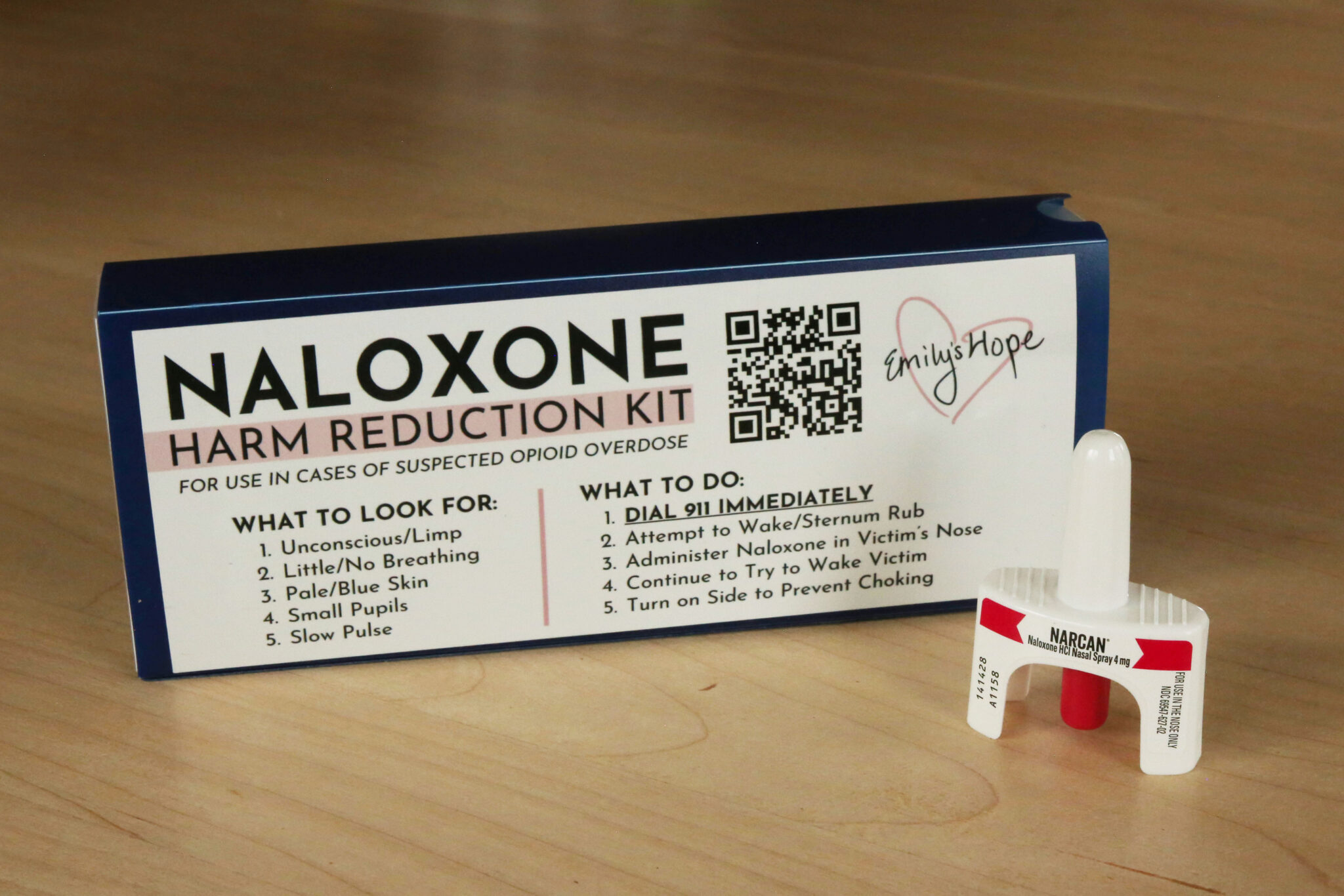
Makenzie Huber/South Dakota Searchlight
About 20,000 opioid overdose prevention kits will be distributed across South Dakota thanks to a partnership between the state and Sioux Falls-based nonprofit Emily’s Hope. The kits are filled with naloxone, an antidote for opioid overdoses, along with other resources and information.
Emily’s Hope founder and CEO Angela Kennecke, whose daughter died from a fentanyl overdose in 2018, announced the partnership in Sioux Falls on Friday alongside South Dakota Attorney General Marty Jackley, state Health Department Secretary Melissa Magstadt and state Social Services Department Secretary Matt Althoff.
The distribution is funded with $350,000 of South Dakota’s $78.6 million “and counting” in national opioid settlement funds, Jackley said. The national opioid settlements were reached to resolve opioid litigation against pharmaceutical distributors and manufacturers accused of flooding communities with opioid painkillers even though they allegedly knew how addictive and deadly the drugs were.
South Dakota will receive about $50 million over the next 15 years from the first settlement and will receive another $28.6 million over the next 17 years from a settlement with Walgreens, CVS, Walmart, Teva and Allergan.
“That’s what is so important about this partnership is it’s putting those dollars back to work to save and protect people,” Jackley said.

Teva pharmaceuticals donated 2,313 kits for the effort and sold the other kits at a discounted rate to the state.
Ninety-five South Dakotans died from overdoses in 2023, according to the state Department of Health. Forty-seven of the deaths were opioid-related, and 39 of those were fentanyl-related, Magstadt said. Fentanyl is a synthetic opioid.
“Since 2019, we’ve had a 70% increase in the amount of fentanyl deaths in South Dakota,” Magstadt said. “It’s hitting home.”
The program will target areas of the state impacted the most by opioid use, overdoses and death, officials said. The top 10 counties impacted, according to Emily’s Hope, are Minnehaha, Lincoln, Pennington, Corson, Roberts, Turner, Todd, Oglala Lakota, Beadle and Meade.
Although most overdose deaths are among white residents, Native Americans are disproportionately affected. Native Americans die from overdoses at a rate of 26.6 per 100,000 — more than four times the rate among white South Dakotans, according to the State Unintentional Drug Overdose Reporting System.
The kits will be placed in publicly accessible areas, Kennecke said. Emily’s Hope has been distributing naloxone kits, primarily in the Sioux Falls area, for nearly a year. The organization has distributed about 6,000 kits in that time.
Although most overdoses occur in private residences, they also happen in public restrooms, in traffic or on the street, Kennecke said. Offering them in public allows more bystanders to access the drug and intervene.
“Our goal is to have one of these kits in every house, in every business, by every AED possible,” Kennecke said. AEDs are automated external defibrillators that help people in cardiac arrest, many of which are stationed in public areas and offices throughout the state.

Magstadt called naloxone a “one more chance” medicine, since it halts overdose symptoms and opens a window for people to seek treatment for opioid use disorder. Administering naloxone will not harm someone who isn’t experiencing overdose, she said, and victims often appear sleepy while overdosing from opioid use.
The state has distributed about 15,000 naloxone kits in the last eight years to law enforcement, emergency medical services and schools across the state using a federal grant. About 3,600 kits have been distributed to public spaces through the new program so far.
South Dakota’s current plan in the Department of Social Services is to put a majority of settlement dollars into a trust fund to gain interest over time. Althoff said he wants to ensure the money is spent wisely rather than “spend this precious resource for the sake of spending.”
Jackley told South Dakota Searchlight he doesn’t agree with the trust fund approach and he’d rather see the funds be put toward prevention and treatment immediately. That includes funneling some of the settlement money toward rehabilitation for South Dakota prisoners, he said.
“Today, there was a minimal amount of money used from that settlement to save lives,” Jackley said. “We need to do more of that.”
